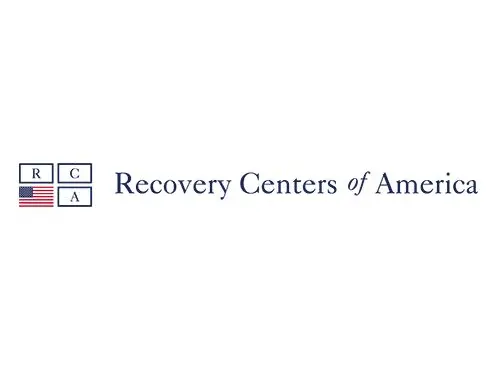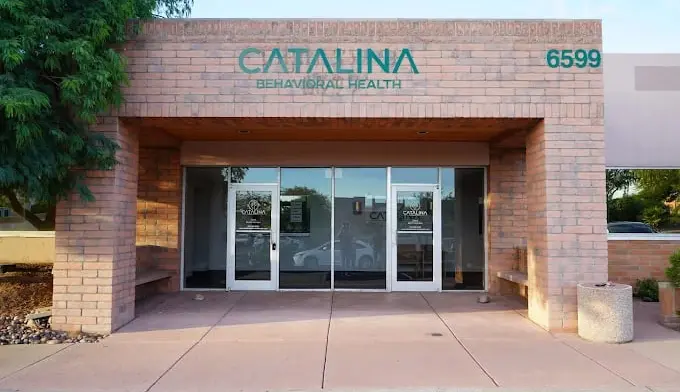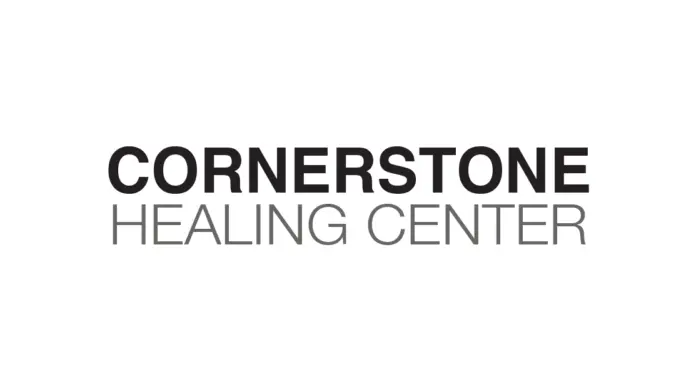What is Pica?
Pica is an eating disorder that causes people to compulsively eat items that are not considered food or items that have no nutritional value. An eating disorder is considered a mental health condition that causes individuals to have an unhealthy relationship with food.
Thus, pica is both a medical condition and pica is a psychological disorder.
Pica conditions can affect anyone of any age, race or gender. It often occurs along with other mental health disorders including intellectual disabilities, autism spectrum disorder, schizophrenia, trichotillomania, excoriation disorder, obsessive compulsive disorder and sickle cell disease.
A study published in 2022 found that pica disorder may also be associated with depression, anxiety, poor body image and other eating disorders.
Additionally, pica eating disorder is sometimes seen in people with iron deficiency anemia, malnutrition, or a family history of pica during pregnancy.
People living in developing countries appear to have higher incidences of pica when compared with more industrialized nations.
This likely occurs as a result of the food insecurity and malnutrition seen in those nations. It’s unclear how many people are impacted by pica sickness because research on the condition is scarce.
Nearby Eating Disorder Treatment Rehab Centers
Loading visitor information…
Signs and Symptoms of Pica
A diagnosis of pica is made when an individual exhibits a pattern of eating nonfood substances for at least one month. Symptoms of pica are generally a result of eating nonfood items.
Persons with pica may develop roundworm infection, constipation, electrolyte imbalances, heart arrhythmias, lead poisoning and intestinal obstruction.
Common non-food items eaten by persons with pica:
- Ash
- Baby powder or talcum powder
- Chalk
- Charcoal
- Clay, dirt or soil
- Eggshells
- Feces of any type
- Hair, string or thread
- Ice
- Laundry detergent
- Paint chips
- Paper
- Pebbles
- Pet food
- Soap
- Wool or cloth
FAQs
What Causes Pica?
Researchers are unclear on the exact cause of pica sickness but have recognized relevant components that increase the risk of developing the disorder. These include:
Cultural or learned behaviors
Pica may originate from learned behaviors, including cultural or religious practices that involve the consumption of nonfood items during certain rituals. However, pica is diagnosed only when these behaviors transcend cultural or religious practice and become a compulsive behavior that puts the individual’s physical, emotional, or mental health at risk.
Stress or anxiety
For certain individuals eating nonfood items is a coping mechanism.
Adverse childhood experiences/childhood food insecurity
Poverty may induce some people to consume nonfood items, although the exact reasoning for this is unknown. Researchers hypothesize that this may be a coping mechanism or attention seeking behavior in children and adults who have experienced food insecurity.
Nutritional deficiencies
People with pica may have mineral or other deficiencies in their diet. Anemia (low iron levels) and zinc deficiencies are commonly found in persons with pica.
Mental health conditions
Pica can be associated with mental health conditions that develop in utero. It may also result from genetic conditions passed down from parents or it may develop spontaneously at some point in an individual’s life.
Medical conditions
Some medical conditions not associated with primary nutritional deficiencies may give rise to pica. Pregnancy is strongly associated with pica. Persons with sickle cell disease may also be at risk of developing the condition.
Medications
Certain medications can increase the risk of developing pica syndrome. However, it’s often unclear if the medication or the underlying condition is the true cause of pica disorder.
Family history
If members of your family have experienced pica, you may be at an increased risk. This is especially true if you have first degree relatives, such as parents, siblings, or children, with the condition.
How Do You Treat Pica?
Treatment for pica starts with a thorough medical examination to rule out any underlying medical conditions or mineral or nutrient deficiencies. When such conditions are found, medical treatment or nutritional supplementation will often correct the problem.
For individuals with pica disease and no known health condition or nutrient deficiency, behavioral therapy should be considered.
This often includes reducing access to the substance or providing an appropriate substitute with a similar texture. Furthermore, treating other co-occurring disorders, such as schizophrenia or autism spectrum disorder may decrease the symptoms of pica. This may include cognitive and behavioral interventions including redirection and rewarding individuals for not consuming any nonfood items.
Is Pica Dangerous During Pregnancy?
Pica can be dangerous during pregnancy. Consuming certain nonfood items can lead to poisoning which is not only harmful to the mother but has catastrophic implications for the fetus.
For instance, women who consume paint chips are at risk of lead poisoning. Exposure to lead while in utero increases the risk of neurological damage to the fetus, which may result in impaired memory, developmental delays and behavioral problems such as ADHD.
Despite the dangers, pica is not uncommon during pregnancy with studies indicating an estimated 27.8% of the pregnant or postpartum women that were studied worldwide have pica. Because pica can be linked to mineral or vitamin deficiencies, pregnant women should be screened for these conditions early in the pregnancy.
Anemia is prevalent in women of child-bearing age and is frequently associated with pica. It can also be very serious, especially for pregnant women.
It can lead to an increased risk of blood loss or infections, fatigue, dizziness and shortness of breath for the mother and low birth weight, preterm birth, intrauterine growth restriction, developmental delays and increased risk of death for the baby.
How do you treat pica during pregnancy?
The first step in addressing pica during pregnancy is to rule out any obvious causes such as a vitamin or mineral deficiency.
If testing reveals a deficiency, correcting it will likely correct the pica. If pica is a result of a mental health condition, a referral to a qualified mental health professional would be indicated to help the mother manage her condition in addition to comprehensive obstetric care.
Is pica dangerous?
Yes, pica can be dangerous. Consuming nonfood substances can cause a variety of physical conditions including poisoning, constipation or intestinal obstruction, dental issues, electrolyte imbalances leading to heart arrhythmias, and parasitic infections. These conditions can be fatal and must be addressed expeditiously to prevent serious outcomes.
Poisoning most commonly occurs from ingesting lead from paint chips. Lead poisoning has been shown to cause irritability, lethargy, headaches, abdominal pain, weight loss, numbness in feet and legs, loss of control of bodily movements (ataxia), seizures, cranial nerve paralysis, pressure in the brain causing the optic nerve to swell (papilledema), brain damage, coma and in some cases, death.
Constipation or intestinal obstruction can be caused by ingesting nonfood items such as clay, dirt, paper, rocks or pebbles. Intestinal obstruction will likely require surgical intervention. If not diagnosed and corrected early an obstruction can be fatal.
Dental issues result from consuming nonfood items that cause severe damage to the teeth and abrasion to the gums. This could impact eating and may result in a serious infection.
Electrolyte imbalance can cause heart arrhythmias. Severe heart arrhythmias can be life-threatening because they increase the risk of cardiac arrest, heart failure and stroke.
Parasitic infection can result from eating contaminated nonfood items such as dirt, clay, rocks or feces. These types of infections can lead to flu-like symptoms, vision problems, inflammation of the heart (myocarditis) and inflammation of the brain (encephalitis).
Finding Eating Disorder and Pica Treatment.
Treatment for pica and other eating disorders is available. The first step includes a thorough physical assessment and blood work to look for any underlying causes such as nutritional deficiency.
If testing reveals an obvious cause for the symptoms, correcting the underlying cause may be all the treatment needed.
For example, a pregnant mother who is eating large amounts of ice may be low on iron. Adding a daily iron supplement will likely treat the anemia and in turn, treat the pica.
For individuals with mental health disorders who show symptoms of pica, the treatment may include the use of mild aversion therapy, behavioral therapy or differential reinforcement.
In some cases, antipsychotic medications may help to manage pica. Finding qualified medical and mental health professionals who are experienced in treating pica is critical for creating the most effective treatment plans and supporting long term recovery.
Addiction Centers That Provide Eating Disorder Treatment
| Name / Address / Rating | Description | Treatments / Payments / Programs | Review / Contact | Images | |
|---|---|---|---|---|---|
Icarus NevadaAd This is an ad and Icarus Nevada is a paid advertiser. Paid advertisers may be listed first in search results. This ad may contain content provided by the advertiser. Rehab.com does not verify ad content or any reviews that are displayed. Learn More | About Us – Icarus Nevada At Icarus Nevada in Las Vegas, we provide compassionate, evidence-based care for individuals facing substance use and mental health challenges. Our mission is to support every client’s path to long-term wellness with dignity, respect, and personalized treatment. We offer a full continuum of care designed to meet clients | Treatments Programs | View Website (702) 723-4774 | Icarus Nevada has no reviews yet. Leave a review.
| 
|
5166 State Hwy 48
Dickson, TN 37055
| Recovery Ranch Tennessee, also known as “The Ranch,” is a behavioral health and mental wellness facility located in Nunnelly, Tennessee. They have inpatient and outpatient recovery programs for adults including gender specific programs for women who are navigating a range of mental health struggles including trauma, eating disorders; mood diso | Treatments Programs Payment Options | My experience at The Ranch was for the most part incredible.
PROS- Excellent therapists
A BUNCH of healthy food choices. (You won’t go hungry)
Attentive Nursing staff
Self Accountability work
Amazing groups and community engagement
CONS- Seemed very understaffed at times
Some troublemakers seemed to get too many chances and almost ruined recovery environment
Overall this place helped me do a complete 180. Thank you Clint, Jacque, Kelly, Lee, Lee, Connor, Kyle, Amber, Stevie, Chassity, Denise, ALL the cleaning staff, Rachel, Johnathon, Ricky, and anyone I’ve missed. You are all outstanding in your own ways.
Sincerely,
Madison Bliss
Madison Bliss
1 month ago
Love this place, great staff, top care, needs met. Welcoming atmosphere, peaceful country setting, and wealth of activities tied into care/programming. Provide excellent resources and help throughout program, healthy balance of therapy, activities, and more. Have continued programming opportunities through alumni and also follow-up inquiries after discharge. Highly recommended to anyone struggling with any addiction and/or mental health needs.
Dean Reesey
1 month ago
Pretty cool spot. Solid community and great alumni group for maintaining contacts.
Cope Champney
1 month ago
| 
| |
314 Grove Neck Road
Earleville MD, 21919
| Bracebridge Hall is an inpatient facility located in Earleville, Maryland under the umbrella of Recovery Centers of America. It’s on 560 acres with a view of the Sassafras River. They offer substance use disorder (SUD) treatment and mental health treatment for co-occurring disorders. They accept and are in network with most major insurance plans | Treatments Programs Payment Options | I’ll add more details in the future, but for now, I’ll keep this review concise: the staff, facilities, education, activities, family communication, and all processes at RCA Bracebridge Hall consistently earn five stars. This is where I will always recommend those in need to begin or continue their recovery journey.
Heather Shields
1 month ago
I can’t thank the center and the staff enough for helping my brother overcome his addiction. He is a different person now. Thank you all for giving him his life back and for giving him the courage and strength to continue to be his better self. Thank you all for helping give me my brother back!!! He is 156 days sober and counting!!!
Theresa Coe
1 month ago
Thank you, so very much. There are not enough words to express the gratitude I feel towards the love and support your staff showed my husband during his treatment in your facility. His recovery was beyond my expectations, and me and my family are grateful for all the positive progress he has made towards his recovery. What you all do is greatly appreciated ❤️🙏
Sandra O’Toole
1 month ago
| 
5 5 



| |
901 Clint Moore Rd
STE A
Boca Raton, FL 33487
| Boca Recovery Center is a comprehensive drug and alcohol treatment center in Boca Raton, Florida. Their Boca Raton location is actually their administrative office so they don’t administer treatment here directly but this is the place you call as a starting point for your recovery. They’ll help you figure out which of their programs is the best | Treatments Programs Payment Options | This place is god sent. I have been in several trauma centers in Florida and they are the only ones that seem to get it! Great snacks, fashionable donations (including shoes), and even better Techs.
Ive been clean since the holidays due to their new beginnings of sobriety excitement and impressive alumni support system +Nikki. Thanks, Boca 😀.
Beach Beauty
2 months ago
Boca is an amazing place. The staff is absolutely amazing. I was fortunate enough to be able to work with Misty and Sondra. From day 1 until the day I left was a complete 180. Misty helped set me up for my next steps, and truly cares and checked in on me to make sure it was the right fit. She got to know understood me as a person and truly knew the right next steps for me to be set up for success. Highly recommend Boca.
Aria Kamyab
8 months ago
I absolutely love this place!!! So much help and healing!!! Great staff!! 10-10 recommendations.
Nicholas Reece
1 year ago
| 
13 13 



| |
Catalina Behavioral HealthAd This is an ad and Catalina Behavioral Health is a paid advertiser. Paid advertisers may be listed first in search results. This ad may contain content provided by the advertiser. Rehab.com does not verify ad content or any reviews that are displayed. Learn More | Catalina Behavioral Health welcomes individuals and families in Tucson, AZ, to a caring and compassionate environment where healing begins. We specialize in customized mental health and substance use treatment across various levels of care, ensuring clients receive the support and structure best suited to their unique needs. Levels of Care Offered | Treatments Programs | View Website (520) 999-2560 | Catalina Behavioral Health has no reviews yet. Leave a review.
| 
|
235 West Lancaster Avenue
Devon, PA 19333
| Recovery Centers of America at Devon is a 12 step focused, luxury drug and alcohol rehab for adults in Devon, Pennsylvania. They offer medically supervised detox, intervention services, dual diagnosis care, and inpatient, outpatient, and aftercare programs. Specialized services for military personnel, seniors, and LGBTQ+ persons are available. Rec | Treatments Programs Payment Options | RCA Devon is a great place to get help! The staff are really caring and helpful, the groups are positive for recovery, and they do a great job of helping their patients get the most out of treatment. It completely changed my life.
Julian Mendelsohn
2 months ago
Thank you to all the staff of RCA Devon who helped me stop drinking for good. Shout out to Katie, Mark, and Billy. You guys really helped change my perspectives and helped me realize the error of my ways. Recovery is a lot easier when you are surrounded by people who really “get it”, and that was my experience at RCA. Thanks for all the love and support.
Zachary Lutz
2 months ago
1st time there and nothing but great people! Seen alot things that were very postive to lead folks in the right direction! Staff was amazing 👏! Seen young guys come in scared and crying and we all gathered up and place them under our wing! THEY Were scared and bam 3 days in and they loved it there! Rooms were very pleasant and clean! I definitely recommend if you have a problem and need help to reach out to this program! Hats off to all that work there! 👏 food was ok also! I have no complaints at all!
dean crowder
3 months ago
| 
5 5 



| |
21300 Victory Blvd
Suite 540
Woodland Hills, California 91367
| Here at Profound, we use an evidence-based treatment model to address addiction and co-occurring mental health conditions. This means we utilize therapies that are backed by science with proven efficacy. Our expert staff is constantly evaluating the latest treatment modalities in the fields of psychology, medicine, neuroscience, and alternative med | Treatments Programs Payment Options | I just left Profound and I couldn’t wait to leave, but when it was time, I wanted to stay. I created a new family that I could communicate without being judged. Maybe not everything pertained to me, but I did get a lot of tools and coping mechanisms for my addiction. I was fortunate to be in the new Oxnard house and it was a resort. Everyone was great there, so many people to name, but let’s do it! Doug, Katie, Camille, Rob, Jessie, David, Dalton, Kyle, Mike, Michelle, Lindsey, Chloe, Tez, Rodney, Sheryl, Irma, overnight Mike and most of all our amazing Chef Kayla! I will miss all of you and especially all of my house mates! I’m proud I stuck it out and received my 30 day coin! Love you all and thank you🙏
Jason Moore
1 month ago
A Love Letter to the Place That Saved My Life
There are no words big enough, no thank-yous deep enough, to fully express what this place has given me. Walking through the doors of this rehab, I was not just broken—I was gone. A shell. An echo of the person I used to be. I didn’t come in with hope; I came in with desperation. I had burned bridges, lost myself, and forgotten what it meant to truly live. But this place… this place gave me everything back—and more.
From day one, the staff treated me not as a case or a number, but as a soul worth saving. They didn’t judge my past. They held space for my pain, gently guiding me out of the shadows I’d been lost in for so long. They reminded me that I wasn’t just addicted—I was hurting, I was human, and I was still worthy of love.
The counselors weren’t just professionals—they were warriors, walking with us every step, sometimes carrying us when we couldn’t carry ourselves. They challenged us. Believed in us. Cried with us. Laughed with us. Celebrated every tiny victory like it was the Super Bowl. Because in recovery, those victories are everything.
I learned how to feel again. How to breathe. How to forgive myself. I learned that recovery isn’t just about saying no to a substance—it’s about saying yes to life. Yes to family. Yes to morning sunlight and belly laughs and long talks and second chances. I got my smile back here. I got my future back.
I will never forget the people I met here—the late-night talks in the common room, the moments of raw, unscripted honesty, the way complete strangers became family. We cheered each other on. We picked each other up. We healed together. That kind of bond doesn’t fade.
Today, I am sober. I am strong. I am healing. But most importantly—I am here. And I owe that to this sacred place that saw light in me when I could only see darkness.
If you are wondering if this is the place for you, let me say this from the deepest part of my heart: it is. Let this be the start of your miracle, like it was mine.
Thank you, from the bottom of my soul. You didn’t just save my life—you gave me a reason to live it.
Forever grateful,
Cynthia Madison
1 month ago
🌟 A Love Letter to the Place That Helped Me Begin Again 🌟
I don’t know if words will ever fully express what this place means to me — but I’ll try.
When I walked through those doors, I was exhausted. Not just tired — spiritually winded. I was carrying the weight of choices, shame, fear, and the echo of my own voice asking, “Will I ever be whole again?”
And then something happened.
A team of the most compassionate, professional, beautifully human beings I’ve ever met welcomed me — not like a patient, but like a person. Like someone worth fighting for. From the nurses to the counselors, the kitchen staff to the therapists, the front desk to the housekeeping — each one of them carried light into my darkest moments.
They didn’t judge. They didn’t push. They walked with me — step by step — back into myself.
Every group, every one-on-one, every conversation over coffee, every morning reflection… it rebuilt me. They didn’t just treat addiction here — they treated the person beneath it. They reminded me I was still in there, still breathing, still capable of joy, laughter, strength, and purpose.
And yes, I laughed. I cried. I healed. I grew.
If you’re reading this and you’re afraid — please come. If you think it won’t work for you — come anyway. If you believe you’re too broken — you’re not. I promise. I thought that too. And now, by the grace of this place and the hearts that run it, I have hope again.
To the staff: I will never forget you. You saved my life — not just my body, but my soul. I carry your voices with me, your strength, your faith in me even when I didn’t have it myself.
You gave me more than sobriety. You gave me myself back.
Thank you. Forever.
— With all my heart,
[A Grateful Human Being]
Jayler Labrada
1 month ago
| 
16 16 



| |
208 Valley Road
New Canaan CT, 06840
| Located in New Canaan, Connecticut, Silver Hill Hospital is an alcohol and drug rehab facility that provides addiction treatment services. They also provide mental health treatment services. Their levels of care include residential, intensive outpatient, and transitional living accommodations. Located in New Canaan, Connecticut, Silver Hill Hospita | Treatments Programs Payment Options | The adolescent program at k-house saved my life. Amazing facility
Scalpy S
1 month ago
this place saved my life
Catherine Saraceno
2 months ago
Excellent care facility!!!!
John Cline
4 months ago
| 
6 6 



| |
Artemis Adolescent Healing CenterAd This is an ad and Artemis Adolescent Healing Center is a paid advertiser. Paid advertisers may be listed first in search results. This ad may contain content provided by the advertiser. Rehab.com does not verify ad content or any reviews that are displayed. Learn More | Artemis Adolescent Healing Center, located in the serene landscapes of Tucson, Arizona, is a trusted sanctuary dedicated to guiding teens and adolescents toward emotional wellness and recovery. Our mission is to empower young individuals and their families through compassionate care, evidence-based practices, and a vibrant, healing community atmosp | Treatments Programs | View Website (520) 614-8647 | Artemis Adolescent Healing Center has no reviews yet. Leave a review.
| 
|
385 Tremont Ave
East Orange, NJ 07018
| East Orange VA Medical Center is a veterans addiction treatment center that’s located in East Orange, New Jersey. They set out every day to help veterans and their families who are struggling with drug and alcohol misuse by providing several types of services both night and day. They offer a comprehensive outpatient program that will give you all | Treatments Programs Payment Options | Great place for veterans who deserve it
Robby Green
3 months ago
Always good people there. I hope they all get to stay
Mike Brescia
5 months ago
The doctors are professional and helpful. They really care about the veterans health.
Sigsby Cheatham
9 months ago
| 
4 


| |
40 Skokie Valley Road
Suite 200
Northbrook, IL 60062
| Suncloud Health in Northbrook, Illinois, provides residential and outpatient treatment services at the Northbrook Treatment Center. They offer treatment for co-occurring disorders, substance use, and other related traumas. Northbrook Treatment Center accepts both adult and adolescent patients. Suncloud Health in Northbrook, Illinois, provides res | Treatments Programs Payment Options | I’ve always enjoyed working with the outreach, intake, and clinical teams at SunCloud Health. Their expertise in treating eating disorders, mental health conditions, and substance use disorders is evident in their compassionate approach to care. Suncloud is such a wonderful resource for specialized treatment!
Kelly Kelley
5 months ago
SunCloud is an incredible resource for mental health within our communities. They offer comprehensive programming at multiple levels of care as well as across age groups. Additionally, they provide continuing education to practicing clinicians on a regular basis, demonstrating their commitment to treating groups and individuals with the latest, evidenced-based research. Additionally, SunCloud’s medical team is led by Dr. Kim Dennis, who brings a wealth of knowledge, experience, and expertise in the field of mental and behavioral health to the organization. I confidently recommend SunCloud.
Valerie Wyant
5 months ago
SunCloud is a great resource for adolescents and adults struggling with mental health issues, with particular expertise in treating multiple diagnoses. SunCloud provides personalized and individualized care, treating the whole person, not just a part of them. They have a highly trained and experienced medical team lead by one of the country’s leading doctors, Kim Dennis. I have had personal experience with their Community Liaison, Donna Bartlett, through my work with middle and high schools. Donna is wealth of information and an amazing support system for community partners.
Jodie Segal
5 months ago
| 

| |
633 Umatilla Boulevard
Umatilla FL, 32784
| The Recovery Village provides a complete addiction treatment program starting with detoxification through to aftercare with a team of medical, psychiatric, and recovery technicians to oversee the process. Each client has a dedicated counselor to oversee their treatment plan. Clients participate in individual and group therapy. Addiction therapies u | Treatments Programs Payment Options | Melissa was amazing. My therapist Lana was fantastic. I wish I could take her everywhere I go. She was always there for me. Matt and Chris were available and super helpful with case management. Brittany must’ve given me a thousand bags when mine would get warm out and she did it with a smile everytime. Bobby in the kitchen fed us so well. All of the night BHTs were awesome and helpful. Kenneth taught me so much about myself. . I know I’m forgetting some people especially some of the nurses but I would definitely recommend TRV. They saved my life. Thank you again.
melissa lynne
2 months ago
The staff was very helpful and hands-on. Their living accommodation was nice. The food was good. I appreciated the pool and gym.
LeMac Blount
2 months ago
I had great treatment with the recovery village, the therapists were amazing. I spent 47 days there. A huge shout out the the BHT Shannon Hampton! She was amazing. My personal therapist Barb really exceeded my expectations and helped me overcome so much. The case managers, Chris and Nick, are also on top of things and helpful with transitioning. The kitchen staff is so hardworking and put a lot of love in their meals! The two negative things I do have to say is there is one BHT there that is extremely flirtatious and hit on all of the women clients. Myself included multiple times.There was multiple grievances made by multiple women that were ignored by the CEO and others that run this location, even though I was pulled into their admin office for a private meeting with them about it. Nothing was done. When confronted about it they said they never received any grievances about him. If you are someone who has trauma from sexual abuse I would not recommend this facility for you. There are no cameras in the rooms and BHTs should not be searching or going into rooms of opposite sex clients.
Chelsea Clark
2 months ago
| 
6 6 



| |
Icarus Wellness and RecoveryAd This is an ad and Icarus Wellness and Recovery is a paid advertiser. Paid advertisers may be listed first in search results. This ad may contain content provided by the advertiser. Rehab.com does not verify ad content or any reviews that are displayed. Learn More | Icarus Wellness and Recovery in Boise, Idaho is dedicated to supporting individuals and families on their journey to holistic healing and long‑term well‑being. Our mission is to empower each person who walks through our doors with compassion, evidence‑based therapies, and personalized care plans designed to foster meaningful growth and emotio | Treatments Programs | View Website (208) 907-8881 | Icarus Wellness and Recovery has no reviews yet. Leave a review.
| 
|
14502 West Meeker Boulevard
4th Floor
Sun City West, AZ 85375
| Del E Webb Medical Center has been serving the Sun City community in Arizona since 1988. Along with other medical services, the facility offers behavioral health support to adults and adolescents and is part of the Banner Health system. The adolescent services target the ages of 13 and 17 while the adult services are designed for patients 18 and ol | Treatments Programs Payment Options | Their L&D and after birth dept’s are exceptional. Most, all but one, of the nurses were outstanding!
Pamela Baker
1 month ago
I had ankle surgery as an outpatient. It was overall, an awesome experience. They were so incredibly organized and did a great job communicating so I knew what to expect. Staff were incredibly caring and kind. I felt very well taken care of every step of the way.
Tammie Willis
2 months ago
I had a very long wait here previously, but my latest visit was the best E.R. visit of my life. Staff and care were awesome and the wait time was literally non-existent.
John Kolacki
2 months ago
| 
2 
| |
10499 North 48th Street
Augusta MI, 49012
| Skywood Recovery is an Augusta, Michigan, residential facility, nestled in the breathtaking woodlands. Adults seeking treatment for addiction and dual diagnosis can find solace in their welcoming therapeutic environment. They emphasize holistic healing with proven approaches and experiential therapies. Skywood Recovery is an Augusta, Michigan, resi | Treatments Programs Payment Options | I had the opportunity to work at skywood several years ago. It was a great experience that taught me many working lessons that stick with me today. Also a very beautiful location.
Josh Wynkoop
1 month ago
I was so impressed with Skywood in so many ways. My husband went through Skywood and not only has it given him his life back, but they were so supportive all along the way and even after discharge.
Although we had some challenges with our insurance, Skywood was so helpful in walking us through the ups and downs with our insurance company and making sure my husband got the care he needed. Thanks Skywood!
Megan Beattie
1 month ago
Skywood saved my life. The treatment is fantastic if you give it a chance. The staff is kind and caring and they really set you up for success after you leave. I just celebrated 6 years of sobriety and truly don’t think I would have gotten to this point without the tools and knowledge gained from Skywood.
Rachel Hoffman
1 month ago
| 
5 5 



| |
121 Mystic Street
Medford MA, 02155
| Monte Nido – Laurel Hill is a serene and homey residential care center that focuses on treating women with eating disorders. You can find them in Medford, Massachusetts, just north of Boston. Although their main focus is on healing disordered eating patterns, they also provide support for co-occurring conditions, including substance use disorder, | Treatments Programs Payment Options | A truly amazing place staffed with kind, caring, wonderful, professional, fun, generous, thoughtful, and highly-skilled staff (I could go on) who are experts in ED recovery. My therapist at Laurel Hill is by far the best therapist I have ever had — I learned so much from her and am still in awe of how she challenged me and ED narratives. The clinical director treats clients like family and invests her time and energy into each and every one of us — she spent her Christmas holiday with clients baking cookies, enjoying holiday kareoke, and other festivities that she planned for us… it was a special holiday, filled with so much love and support. The nursing staff are SO cool and kind. The RCs are absolutely the best.. I don’t know how they do such a specialized and demanding job and do it SO well, all while getting to become so close with the clients.
I would 100% recommend this place to anyone struggling with an eating disorder. I had lost hope when I entered treatment, and now I look forward to the day when I can say I am fully recovered, because thanks to the LH team, I know that day will come.
Liz B
2 years ago
Aside from one of the RC’s always deez nutting the clients, great experience 🙂
Brianna Racamato
3 years ago
I can’t even begin to express my gratitude towards Monte Nido and especially the staff. Coming to residential at Monte Nido truly saved my life and I don’t believe that I would be here today if I didn’t go here.
Toni Puma
3 years ago
| 
3 

| |
Purposes RecoveryAd This is an ad and Purposes Recovery is a paid advertiser. Paid advertisers may be listed first in search results. This ad may contain content provided by the advertiser. Rehab.com does not verify ad content or any reviews that are displayed. Learn More 7239 Kentwood Ave
Los Angeles, CA 90045
| Nestled in the heart of Los Angeles with sweeping views and easy access to LAX, our luxury substance abuse treatment center offers an exceptional healing experience in a serene, upscale setting. We specialize in comprehensive, evidence-based care with a full continuum of services, including medical detox, residential treatment, and aftercare planni | Treatments Programs Payment Options | View Website (352) 706-8237 | Purposes Recovery has no reviews yet. Leave a review.
| 
15 15 



|
310 N 10th St
Bismarck, ND 58501
| CHI Saint Alexius Health’s Archway Mental Health provides mental and behavioral health care services for youths and adults in Bismarck, North Dakota. Their programs include age-specific inpatient treatment, outpatient treatment, and aftercare support. Specialized services are available for seniors and clients with co-occurring addictions and men | Treatments Programs Payment Options | Good most of the time
TJ M (Michael)
7 months ago
So far it has been such a great experience. Dr stout is amazing and listens to your every need without any judgement or ridicule. I highly recommend him.
alexa “Lex” Raye
1 year ago
They helped our son, so much. He’s doing so much better.
Please don’t hesitate to come here. It’s a good place to find some assistance.
Kitty Kattington
1 year ago
| 
2 
| |
4344 W Indian School
Rd #22
Phoenix, AZ 85031
| At Cornerstone Healing Center we believe in helping people broken by addiction and/or Mental Health Issues heal their minds, body, and spirit. We create an environment where rapid and miraculous recovery can and does happen. Our vision is to provide a safe space for long-term recovery, combining passion, structure, soul-searching, and fun to change | Treatments Programs Payment Options | Great place for recovery. The staff is educated and supportive!
Taylor Smith
3 months ago
The facilities are updated and maintained very well. The staff from management to navigators were top notch. The therapists are authentically kind and extremely helpful as well as knowledgeable. I would recommend Cornerstone to anyone looking to improve their mental health and combat substance abuse issues. Thank you to all of the staff!!!
Jake Torkelson
4 months ago
Cornerstone provides a life-changing experience. The place is very clean, and the staff are very kind and educated.
Trap Taylor
4 months ago
| 
| |
12 Lily Lake Road
Waverly, PA 18471
| Geisinger Marworth, an entity of Geisinger Health System, is an alcohol and substance use treatment facility located in the rolling hills of Waverly in Northeastern, Pennsylvania. They provide inpatient and outpatient (OP) programs for adult men and women. Geisinger Marworth, an entity of Geisinger Health System, is an alcohol and substance use tr | Treatments Programs Payment Options | Best time of my life..I would go back if I could for a meeting..Best staff and community bar none. I will never forget this place ever.
Jeannine Borrell
2 months ago
I went to Marworth for the first time after relapsing after about 5 years sober. When I went there I was a wildly unpleasant person to be around. I hated the world and myself. I was truly terrible to most of the staff. My behavior was argumentative, smug and mean at best. They still welcomed me back 3 more times. I was eventually given Amy as my primary counselor and, she not only took the time to try and understand why I was like that but, she also challenged me to be better. Over my time there I had the chance to get to know the staff very well. They’re good people. Who genuinely want to help people get to the life they’re meant to have. The specialists, rec team, cafeteria workers,house keeping,security(the list goes on and on)are wonderful. That’s what makes Marworth great. It’s not the amenities. It’s not the rock climbing wall, gym, cafeteria, or anything else you can think of. It’s the people that make this place what it is. Is it perfect? Absolutely not, but nothing is. When I went in there looking for all the things that bothered me, I got nothing out of it. When I allowed them to help me, I got everything out of it.
Adam Kamienski
3 months ago
Loved it great experience helped a lot thanks to great staff great attitudes thank you 6 months clean of opiate addiction and Cocaine
Geoffrey Kaplan
10 months ago
| 
4 


| |
Icarus Recovery CenterAd This is an ad and Icarus Recovery Center is a paid advertiser. Paid advertisers may be listed first in search results. This ad may contain content provided by the advertiser. Rehab.com does not verify ad content or any reviews that are displayed. Learn More | Icarus Recovery Center, nestled in the heart of Albuquerque, New Mexico, offers a compassionate, inclusive environment where healing and transformation can truly take flight. Founded on the belief that every individual possesses the strength to rise above challenges, our center is dedicated to providing personalized support on the journey to lastin | Treatments Programs | View Website (505) 305-0902 | Icarus Recovery Center has no reviews yet. Leave a review.
| 
|
3017 Pickett Road
Durham, NC 27705
| Structure House is a residential treatment for individuals with binge eating disorder. The program includes recreational activities, fitness therapy, nutritional counseling and more. Structure House is located in Durham, North Carolina. Structure House is compromised to provide support and compassionate care for individuals with a mental health dia | Treatments Programs Payment Options | One of the best investments I’ve made in a long time was to spend 4 weeks in a total health and wellness immersion at Structure House. I tapped into my greatest and most authentic self while there with my wife. Total body, mind and spirit work. Life changing and transformative. I highly recommend that anyone and everyone give this gift to themselves. You will reset, recharge, rejuvenate, reawaken, rediscover, and retransform. They offer a lecture series entitled, “Digging Deeper” by Life Coach Dr. Lacy Frazier. Wow is all I can say! A must visit experience.
Julius Graham
2 months ago
This place gave me a kind of peace I didn’t think I’d find. The staff really got what trauma does to you, and I felt safe for once. Being around other women made it easier to open up. I’m stronger now. I just wish there’d been more family stuff.
Sheila T.
3 months ago
Thank you to all at Structure House from Reservations with Joelle, to welcome with Lisa and Pam, and Mercado and Tiffany. Thank you to Chef Tom, Sondra, Martha, Jeff ….and the whole crew who spoiled me with all delicious meals. I bought the cookbook and have made several of the recipes. Thank you to Ben and Brandy for all the nutrition tips! I keep telling myself protein, starch, vegetables, and fruit not starvation, that keeps my body running properly! My metabolism is back and I have lost more weight! Thank you to Craig, Cameron, and Joe, Randy Allyson Nancy Melissa and Tasha(?). All your workouts were awesome! I joined a gym and have made a circuit with ropes,TRX , weights, rowing machine, medicine ball, crunches and other core exercises! I am going 3 times a week and riding my bike, thank you for your help to get me back to feeling fit! Thank you to Dr P. and Irina I brought my LDL way down and hope to stay on this healthy and fit journey! Thank you to Lacy and Sue for helping me to focus my Why. I want to be and feel healthy and fit! Now when things try to distract me I focus in on my Why and it keeps me on the journey to experience life’s ups and downs with the strongest and most present me possible. My apartment was amazing the grounds are kept beautifully! I can’t express in words how grateful I am! I felt so spoiled! I met some really amazing people there, who shared their experiences, difficulties and shared their strategies. I am so thankful to my husband for finding Structure House and being willing to invest in my health, fitness, and wellbeing! Blessings to all that make Stucture House an amazing Home of wellness, fitness, and health!
kathy
3 months ago
| 
6 6 



| |
741 US-1
North Palm Beach, FL 33408
| Elan Recovery + Wellness in North Palm Beach, Florida, is an addiction treatment center and mental health care facility. They offer comprehensive outpatient counseling and mentorship to adults seeking recovery in a convenient and comfortable setting. Elan Recovery + Wellness in North Palm Beach, Florida, is an addiction treatment center and menta | Treatments Programs Payment Options | I was the first free 2 weeks of recovery after relapse, it was needed. Thank you for being there when I struggled with my addiction. Curtis
J-DOG DREW-BOY
6 years ago
Goodmorning
I would like too say thank you too my family who took the time too find elan for me i was not in a good place my time there brought my life back my kids my family and my smile 😇
I learned alot THANK YOU
Too ALL and EVERYONE at elan my life is so much better now i have ME back .I also met wonderful people there that will always have a place in my heart💝💝💝
If ur struggling this os ur place
Thank you again lots of love always
😘😘😘
And today is 6 months
Great day love u all
Maria Domingo
6 years ago
When I came into Elan I was broken, I had no trust in rehab centers and they changed my way of thinking. They earned my trust and helped me save my life. The staff is truly the best hand picked employees a rehab center could have. All the therapists are phenomenal in what they do, they have all helped me and have gave me the criteria to live a honest clean sober life. The Techs are wonderful they’re so welcoming and do anything to make you comfortable, the lead techs Keri & Scott are so insightful. The family program that the therapist Lystra conducted was the most HEALING EXPERIENCE and has helped with a lifetime worth of damage. We keep in contact weekly and it’s the most beautiful relationship I’ve bonded with a therapist, thank you Lystra for all you do. The Director Barbara I will be forever grateful for she always made time to be there for me. The Clinical Medical staff knows what they are talking about and very understanding. Pastor Craig is the best motivational staff member he’s made a world of a difference in my life. Diane’s groups are AMAZING! I’ve learned so much about why I did what I’ve done and she has always been there for me. If you wanna get deep in the Big Book Larry can direct you with any question and answers you have. Thanks to all these staff members my higher power and my sponsor my sobriety date is 08-21-18 I have recently celebrated Six months, am sponsoring young woman myself, & I couldn’t have done it with out the help of Elan Recovery & Wellness.
Ninaa
6 years ago
| 
| |
Ingrained RecoveryAd This is an ad and Ingrained Recovery is a paid advertiser. Paid advertisers may be listed first in search results. This ad may contain content provided by the advertiser. Rehab.com does not verify ad content or any reviews that are displayed. Learn More | At Ingrained Recovery, we believe in healing the whole person—mind, body, and spirit. Located in the heart of Eastman, Georgia, our treatment center offers a safe and supportive environment where individuals can begin their journey toward lasting recovery. Our team is dedicated to helping each client uncover the root causes of their struggles wit | Treatments Programs | View Website (844) 450-1700 | Ingrained Recovery has no reviews yet. Leave a review.
| 
3 


|
Purpose Healing Center Drug and Alcohol Detox – PhoenixAd This is an ad and Purpose Healing Center Drug and Alcohol Detox – Phoenix is a paid advertiser. Paid advertisers may be listed first in search results. This ad may contain content provided by the advertiser. Rehab.com does not verify ad content or any reviews that are displayed. Learn More | Purpose Healing Center, nestled in the vibrant heart of Phoenix, AZ, is a compassionate haven dedicated to guiding individuals on their journey to holistic healing and sustainable recovery. Our mission is to ignite hope, empower transformation, and cultivate resilience through a comprehensive continuum of care tailored to each person’s unique pat | Treatments Programs | View Website (480) 405-5633 | Purpose Healing Center Drug and Alcohol Detox – Phoenix has no reviews yet. Leave a review.
| 
|






